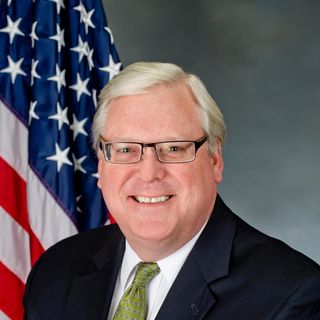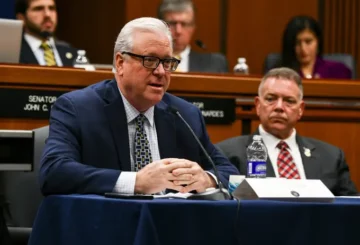Raising awareness over lithium battery fires and needed training for first responders
From NY State Senator Tom O’Mara,
We’re coming off “National Fire Safety and Prevention Week” when numerous area fire departments throughout the Southern Tier and Finger Lakes regions held open houses to promote fire safety.
On Saturday, October 18, in Elmira, a “Unity in the Community” event sponsored by Elmira Mayor Dan Mandell and Dr. Stephen Coleman focused on honoring and thanking firefighters and first responders.
These events serve as timely reminders of just how fundamental our firefighters and first responders are to the safety, security, and strength of our communities – and they also serve to highlight the many challenges facing emergency services professionals and volunteers across this state.
For example, the theme of this year’s fire safety week was “Charged Into Safety” focusing on lithium-ion battery safety, which has risen to the top of the list of emergency services concerns and challenges as the use of these batteries has become an ever-increasing part of our everyday lives powering cell phones, laptops and other household devices, and, increasingly, electric cars, e-bikes, and other vehicles.
This becomes especially alarming as New York continues rapidly imposing all-electric mandates on all New Yorkers. It’s a serious concern for firefighters and first responders, one that I’m hearing more and more across the 58th Senate District.
In a recently adopted resolution, the Allegany County Legislature stated, “While lithium batteries provide convenience and innovation, they also pose potential fire hazards if not charged, stored, or disposed of properly. The 2025 Fire Prevention theme, ‘Charge Into Safety: Lithium Batteries in the Home,’ highlights the importance of educating the public on safe practices to reduce the risk of battery-related fires.”
Assemblyman Phil Palmesano and I recently met with the members of the Yates County Legislature to discuss key concerns, a number of which centered on New York State’s all-electric mandates and the challenges, dangers, and uncertainty surrounding them – including the siting of battery storage facilities, the siting of solar farms on prime agricultural land, incentives for EMT training, the ability of the grid to handle what’s coming, and the overall uncertainty facing county governments, school districts, fire departments, and many others.
Battery fires have emerged as a particular concern and challenge requiring special response equipment and proper training in light of the reality that these battery fires burn more rapidly and far hotter than what most firefighters have experienced, and require many more resources, including massive amounts of water, to put out.
According to a recent Spectrum News report, a national study in 2023 revealed that 40% of first responders and firefighters “had no training whatsoever in how to deal with electric vehicle fires and incidents.”
That’s not a comforting statistic, particularly here in New York State where the Spectrum report goes on to note, “According to state records, there are more than 75,000 EVs registered in upstate New York. The state projects three million EVs on the road by 2030. By the end of this year, a state mandate requires all passenger cars, SUVs and pickup truck sales to be 35% electric. By 2030, that number climbs to 68%.”

An article posted on the Firemen’s’ Association of the State New York website (fasny.com) highlights the concern, furthermore, of what’s facing firefighters and first responders surrounding New York’s all-electric school bus mandate, “New York’s firefighters know how to respond to a fire or perform a rescue on the 47,000 diesel buses currently in service in New York. However, first responders’ training, procedures and equipment will need to evolve to reflect the transition from diesel to electric buses. The first question emergency dispatchers should ask when fielding a vehicle accident call is whether any of the vehicles involved in the accident are electric vehicles. Unless first responders have had training with electric vehicles, they should not touch the vehicle and should wait until trained personnel are on scene.”
It is a critically important safety issue yet Governor Hochul recently vetoed legislation (S5848/A247), which I strongly supported and which was overwhelmingly approved in the Legislature with bipartisan support, that would have directed the state fire administrator to move forward on establishing a specialized electric vehicle emergency response training program for all first responders.
“While I find the goal of expanding EV training laudable, this bill would require the expenditure of funds that are not accounted for in the State’s financial plan,” the governor explained in her veto memo. “Any EV emergency response training would be more appropriately considered in the context of budget negotiations.”
On the governor’s veto, I’ll just say that New York State spending has skyrocketed to unprecedented levels, including a $15-billion increase in this year’s budget over last year, during Governor Hochul’s tenure and I hope the governor will prioritize this critical action in her budget plan next year.
In addition to all the above, local volunteer fire departments across the region and statewide, as well as local leaders in every county I represent, continue to highlight one of New York’s most daunting challenges: the recruitment and retention of local volunteer firefighters and EMTs.
It, too, remains critically important for New York State’s future, especially throughout our rural, upstate localities where the local volunteer fire department has long been a foundation and mainstay of so many communities. Its demise can’t be risked. As many of us have said repeatedly for many, many years now, keeping our corps of emergency services volunteers strong must be a statewide priority. Volunteer fire departments have long been the foundation of public safety and security, and the center of community service and strength, and civic pride.
Yes, our firefighters and first responders deserve every measure of gratitude and respect we can deliver. As legislators, however, we must remember that they need us to take important actions too, and we have to answer that call.






